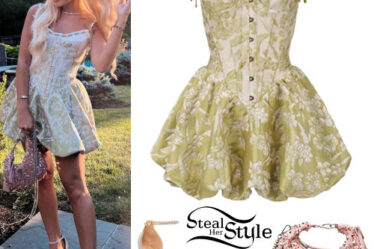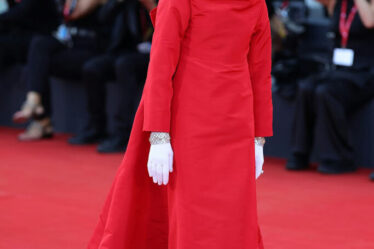
When Daniel Solomon was a college student at Indiana University back in 2014, he had a dorm room hustle selling fashion to friends on the men’s basketball team who struggled to find the hottest clothes and shoes in their size. OG Anunoby, a top player for Indiana’s Hoosiers, was one of them. In 2017, Anunoby was drafted by the Toronto Raptors, a professional NBA team, and turned to Solomon for help crafting his off-court looks.
By that time, a new generation of basketball players were in the business of building personal brands, with off-court style as important as on-court performance. NBA legends like LeBron James had turned gameday arrivals — known as “tunnel walks” for the pathways connecting locker rooms to arena entrances — into something like the league’s equivalent to Hollywood’s red carpet.
But young players like Anunoby and his peers have since upped their style game, crafting their looks at the pace of social media and trading streetwear staples for high fashion. That’s fuelled growing demand for specialised stylists and “plugs” who can provide basketball players with distinctive looks — and created new marketing opportunities for luxury brands.
These days, Solomon has a lucrative business selling “fire fits” to a client roster that includes hundreds of professional basketball players, who now dress in high-fashion brands for their pre-game tunnel walks. Later this week during the playoffs, when all eyes are on them, brands like Thom Browne, Celine, Bottega Veneta, Marni, Rick Owens, Prada, as well as “insider” labels like Chrome Hearts and Who Decides War, will almost certainly be on full display.
“Brands are really seeing how much the tunnels and everything that we do kind of matters to society and pop culture,” says Washington Wizards forward Kyle Kuzma, who is known for wearing bold meme-generating fashion pieces like an oversized pink Raf Simons sweater.
The Business of ‘Fire Fits’
Solomon launched his career from his family home in the Long Island suburbs, funnelling streetwear brands like Supreme to Anunoby’s hotel room whenever he was in New York for games. Soon, Solomon’s service caught on with other players, and he became known across the league as a “plug” for cool clothes. (Unlike a stylist who typically borrows clothes from brands, a “plug” sources and sells merchandise like a vendor at a vintage market). Today, Solomon organises 100-plus hotel pop-ups per year and generates annual sales in the high seven figures.
“If you’re on the road and have somebody pull up with thousands of clothes, and you can pick whatever you want, that’s very efficient,” says Kuzma.
For top NBA players, wearing “fire fits” has almost as much currency as being able to “knock down threes from downtown” and they are increasingly turning to high fashion to catch eyes. “The Internet has forced everyone to want to be more fashionable,” says Toreno Winn Jr, who styles Kuzma. “It’s about creating moments because peoples’ attention spans are short today.”
“The league is getting younger. They care about their image and how it looks on Instagram,” adds Richard Ontiveros-Gima, a former paparazzi photographer who now shoots basketball players for his @thehapablonde Instagram and has become something like The Sartorialist of tunnel walks. “They grew up when streetwear became high fashion — it’s natural for them.”
Fans are tuning in. @leaguefits, an Instagram account that focuses on NBA style, has attracted 889,000 followers. So is the traditional media. In 2022, American GQ’s readers voted Oklahoma City Thunder’s Shai Gilgeous-Alexander “most stylish man of the year” for his edgy high fashion-streetwear mashups. The New York Times’ The Athletic regularly ranks players’ style choices. And last month, the Wall Street Journal profiled Kuzma.
“Style icon is the perfect way to describe these guys,” says vintage specialist Tom Deceglie, who, like Solomon, sells to players in their hotels throughout the eight-month-long NBA season. “It’s crazy how the tunnel walk has gotten to this level because I remember guys used to just come in wearing sweats, and that was it.”
The roots of the phenomenon stretch back to the 1990s. At the time, Dennis Rodman’s flamboyant style — including colourful hairstyles, tattoos, piercings and penchant for sparkly crop tops — challenged traditional notions of masculinity, and demonstrated a look’s power to attract attention. In the early 2000s, Allen Iverson brought hip-hop swagger to the league, wearing cornrows, oversized Sean Jean sweats with Timberlands and diamond-studded necklaces by Jacob the Jeweler, a look that drew criticism from the NBA’s then commissioner, David Stern. But it was LeBron James’ stylist, Rachel Johnson, who convinced high-end brands to make custom clothes in the player’s size, opening the door to stronger relationships.
The Opportunity for Brands
The mechanics of how the clothes end up on players are different from how red carpet dressing works in Hollywood. Unlike actors, NBA players are far taller and broader than average. Brands struggle to loan them pieces because most don’t make samples in their sizes. So players typically buy their own looks from retailers or the league’s “plugs.” Sometimes they pay for custom orders from brands. And because they are paying customers, their relationships with fashion brands are often less transactional than traditional endorsement deals.
While some brands do pay players for placement, others, like Marni, prefer to engage with NBA players as VIP clients, citing authenticity. And being embraced by athletes means exposing the brand to millions of their global fans who watch their games and see what they wear on television and social media.
When Kyle Kuzma posted a photo of himself wearing a $3000 Rick Owens puffer jacket on Instagram in February, the item sold out within a few days at Ssense, according to retail analytics firm Edited. Similarly, when Cameron Payne of the Phoenix Suns was spotted wearing Bottega Veneta’s $1,050 kiwi parakeet-printed button-down, the product had to be restocked on the Italian brand’s US e-commerce site four times.
“It’s totally logical because athletes, especially in America, they’re your heroes,” says Hung La, the founder of independent menswear label Lu’u Dan, which saw a significant uptick in sales for its tiger-print sweatshirt when Kuzma wore the item earlier this year.
Kuzma, however, wants to funnel his status as a style icon into his own brand, Childhood Dreams. Meanwhile, Solomon and Deceglie have their sights set on mining the opportunity in college basketball, whose players attract significant attention and are now permitted to profit from their image.
Additional reporting by Daniel Yaw Miller.


